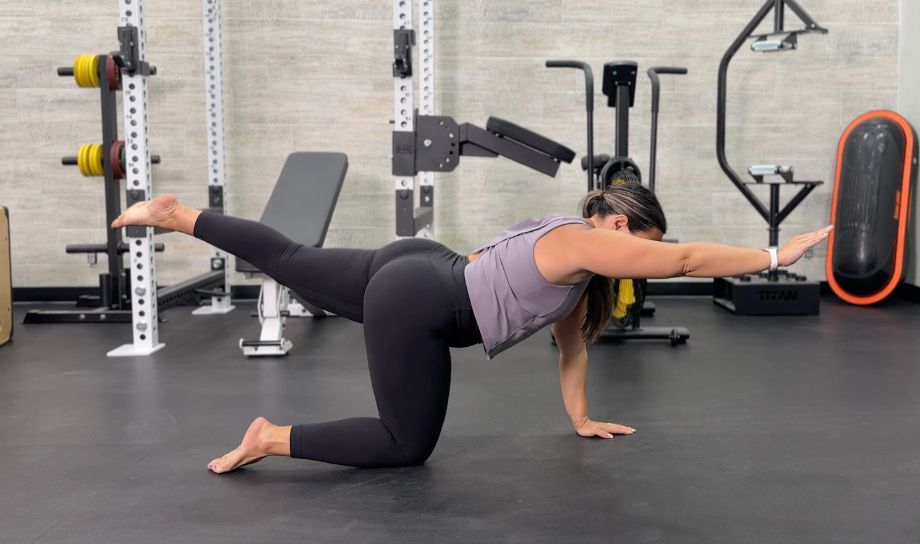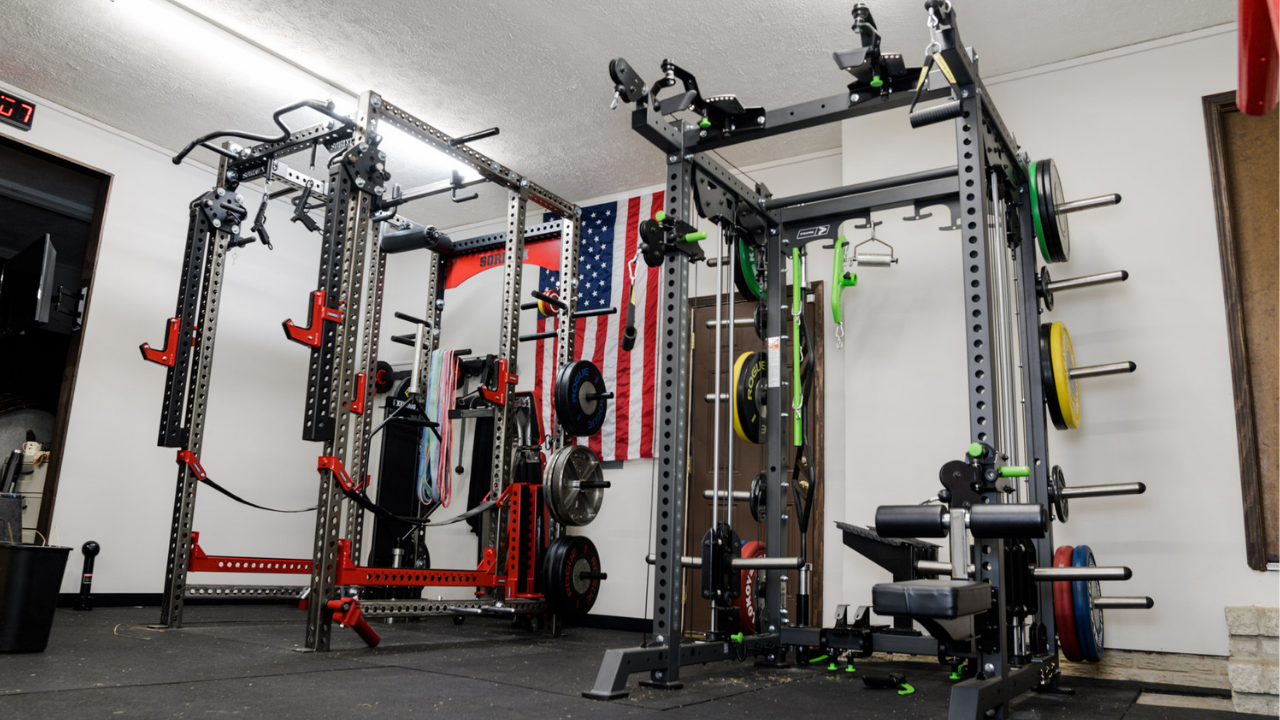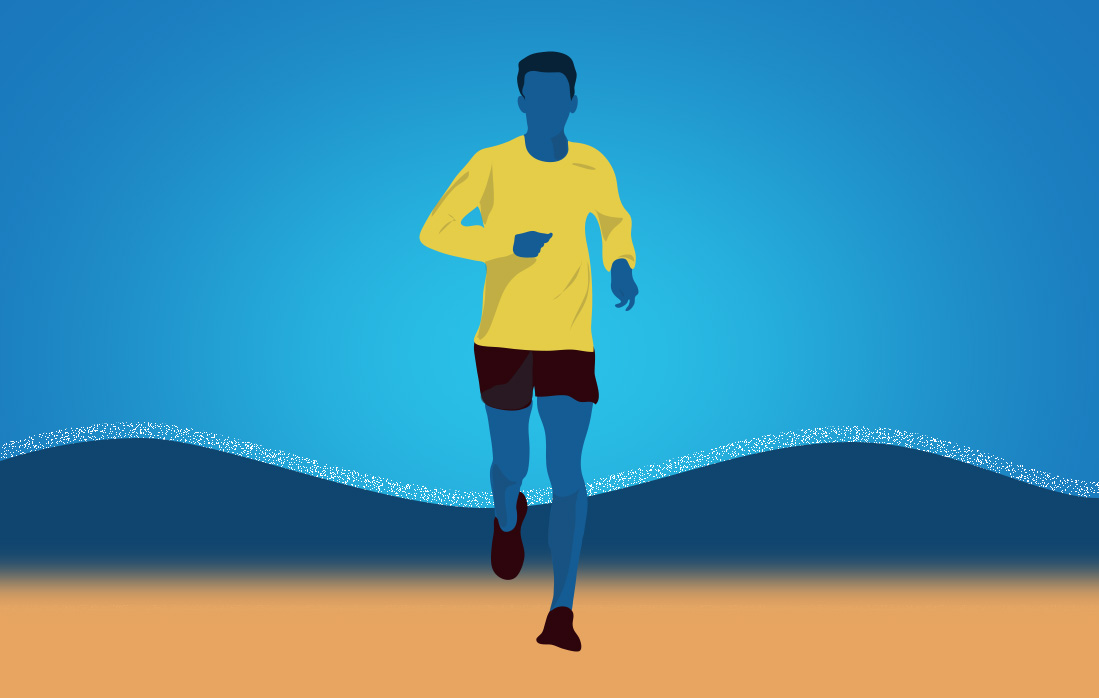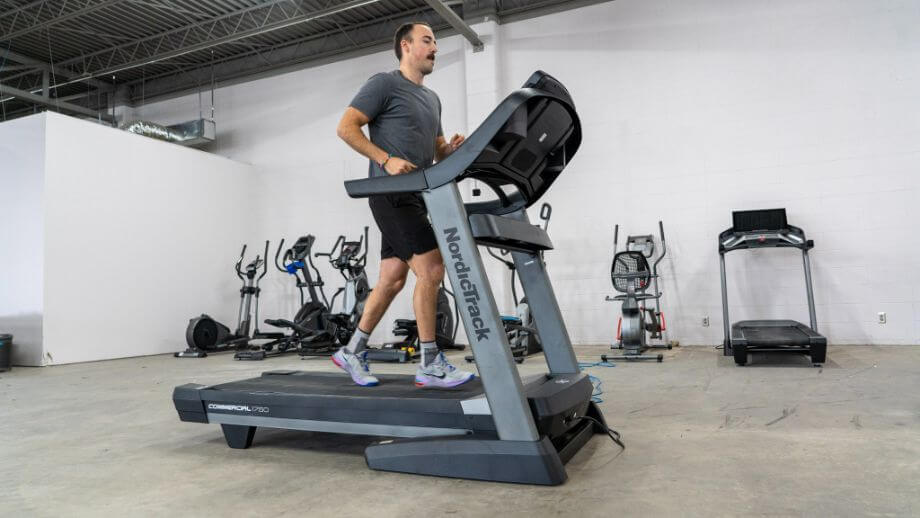The bird dog exercise is easily one of the best ab exercises, as this movement is simple, easy to learn and master, non-impact, low intensity, yet it gets big results in terms of building core strength and stability.
Today, we’re discussing how to do the bird dog exercise, trainer tips for form, common mistakes to avoid, as well as useful accessories for making the movement a breeze.
How To Do the Bird Dog Exercise
- Start out in the tabletop position by dropping to your hands and knees.
- Slowly lift your right leg and left arm at the same time, keeping them straight.
- Hold the contraction, then return to the starting position.
- Now lift your left leg and right arm, hold, and return to the starting position
- Continue, alternating sides, until the set is complete.
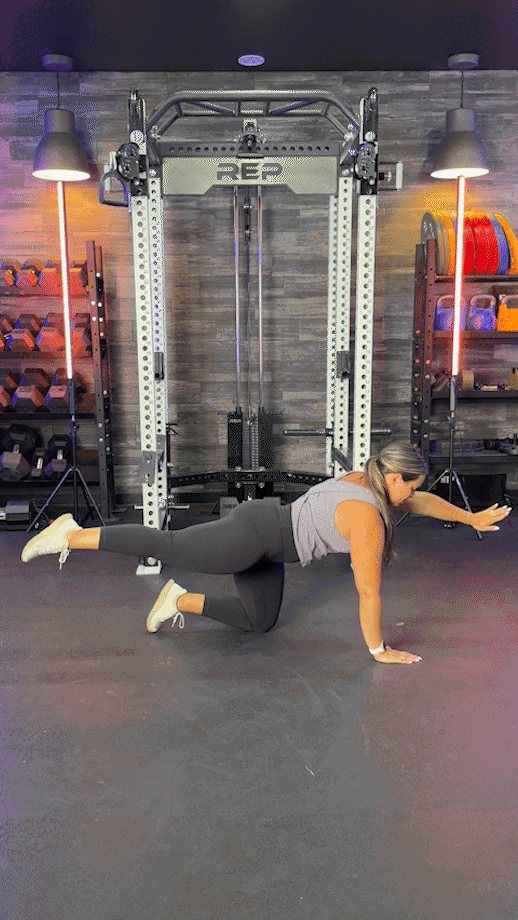
Benefits of the Bird Dog Exercise
There are a number of reasons to do the bird dog exercise. Read on to find out why our GGR team does this movement in their own exercises as well as with the people they train.
Reduce Lower Back Pain
Low back pain has been the leading cause of global disability1 for decades. Adults everywhere are constantly looking for ways to address their non-specific lower back pain, or NSLBP, but what if the solution was right in front of them all along?
The fitness-focused folks know that lower back pain goes hand-in-hand with poor core strength and stability. Without a strong trunk to stabilize our posture, we’re at gravity’s mercy, and that’s really going to take a toll on our spines as we age.
Those with strong core muscles, or those who perform core exercises regularly, tend to have less NSLBP symptoms2 and generally live a more pain-free life.
RELATED: Lower Back Exercises for Stability and Strength
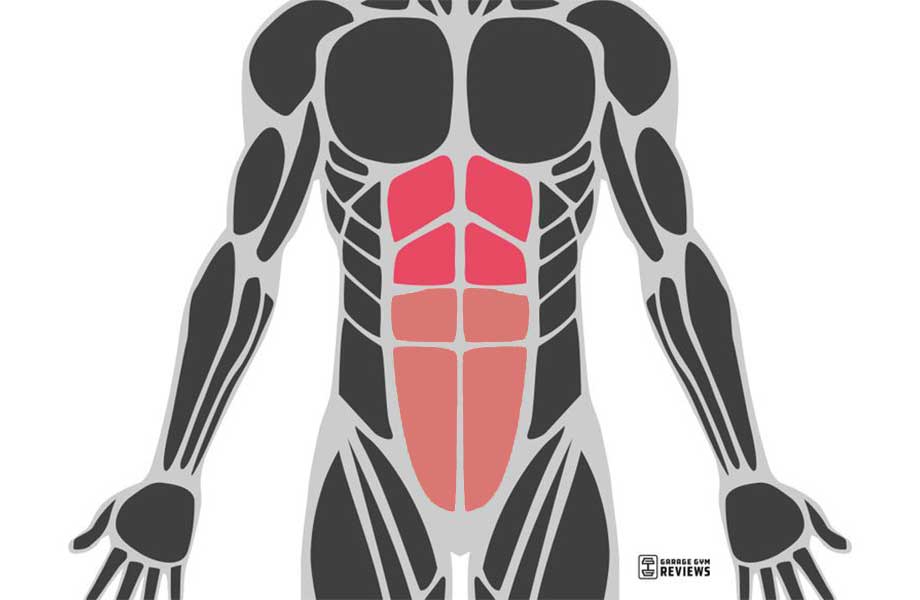
Versatile
You can perform the bird dog as part of your warm up exercises or as part of your strength training routine. Because you use so many muscle groups in this movement, it can help to get the blood flowing, especially among experienced exercisers. Beginners may find it better to work on their form and coordination by using this as part of their main workout routine.
Improves Coordination and Balance
“I have many of my clients do the bird dog exercise because it works balance, as two limbs are off the floor at the same time,” says GGR Head of Content and certified personal trainer Kate Meier. “It also forces people to work on coordination, as you’re having to move opposite sides of your body in opposite directions.”
Trainer Tips for Form
The bird dog exercise is among the best low-impact exercises, so the stakes are pretty low. Nonetheless, you’ll get the best results by performing it with proper form and fighting to keep your form picture perfect as fatigue sets in.
Here are some tips, courtesy of CPT Kate Meier, so you really nail it!
Maintain a Flat Back/Neutral Spine
“We want positioning and movements that promote proper alignment,” says Kate, “that means, even though we’re in the quadruped position on the floor, we want to form a nice straight line with a flat back and a neutral neck and spine.”
Assuming this positioning not only promotes proper alignment and encourages efficient movement mechanics, it also keeps the focus on our target muscles and off our poor lower backs and spines!
Breathe In Sync With Your Movements
The yogis are likely already practicing coordinate breathing, but syncing your breath with your movements during the bird dog exercise is also very important.
There are two reasons for this.
Movement requires oxygen, so syncing your breath with the movement ensures you’re supplying enough oxygen to your body as you move. It’s also a reminder to not hold our breath; something many of us are guilty of, especially when the going gets tough!
Keep Your Gaze Toward the Ground
The idea is to keep your neck and spine in a neutral position as you move, so, even though it’ll be kinda boring, you have to make intense eye contact with the floor as you do your reps. Looking anywhere else could take your neck out of alignment and increase your risk of injury.
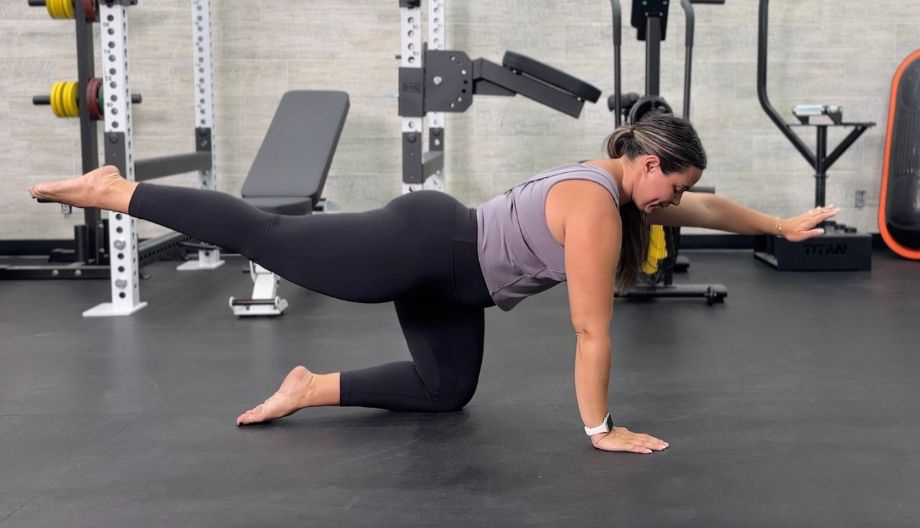
Common Bird Dog Mistakes
The bird dog is a super accessible exercise because it’s pretty straightforward, involves essentially no technical skills or movements, and requires no equipment whatsoever.
That doesn’t mean there aren’t ways to mess it up, but we’re here to help prevent that!
Here are some of the most common mistakes people make when learning and performing the bird dog exercise, so you know what to avoid!
Arching the Back
It doesn’t matter if you’re doing a deadlift variation, back squat, push-up, or bird dog, your back must stay flat with your neck and spine in a neutral position.
“Arching or rounding the back puts increased stress on the lumbar spine,” Kate says, “which can lead to lower back pain and increase your risk of injury.”
You’ll be tempted to arch as your core gets sore, but fight the urge!
If you find yourself struggling to maintain proper form, listen to your body and stop. You’re better off resting and finishing the set with good form after a breather than to eke out sloppy reps and strain your back muscles in the process.
Looking Forward Instead of Down
We love to look at what we’re doing when we move.
That’s why, even though we can definitely feel our arms as we lift them above our head, we look up anyway to make sure the arm is indeed still attached to us doing what we need it to do.
We’re being cheeky here, but you get the point.
“Lifting your head to look forward instead of keeping your eyes fixed on the floor will take your neck out of alignment,” says Kate, “increasing your risk of injury.”
So, how will you know your form looks good if lifting your head immediately makes your form “not good?”
That’s easy!
Ask a training partner, certified personal trainer, or other qualified fitness professional to observe and provide feedback. Let them worry about how it looks while you focus on engaging your muscles and maintaining proper alignment through the full range of motion.
Moving Arms and Legs Out of Sync
Could you theoretically get the same muscle activation from the bird dog exercise if you were to, say, raise your arm first and your leg second?
Well, yes. But that’s not the point.
Bird dogs are excellent for building core stability and strengthening the back, but they’re also good for improving your coordination and balance, since your end position involves only two limbs making contact with the floor.
To fully reap the benefits of the bird dog exercise, it’s important to move slowly with control and synchronize the movement of your arm and opposite leg.
RELATED: The Best Core Exercise Equipment
Bird Dog Variation
Are you ready to take your bird dog skills to the next level? Here’s a great progression you could try during your next core workout.
Pause Bird Dog
Most exercises we do in the gym are isokinetic, meaning they involve your muscles lengthening and shortening as you move.
Isometric exercises, on the other hand, do not involve any lengthening or shortening whatsoever. Your muscles are contracted simply just by being tensed.
The classic example of an isometric exercise is the tried-and-true front forearm plank.
According to a 2015 study published in the Journal of Strength and Conditioning Research3, “an isometric training approach [is] superior in terms of enhancing core stiffness” versus “dynamic core training methods.”
So, let’s take these principles and apply them to the bird dog exercise.
Get into your classic bird dog position, raising the opposite arm and leg simultaneously, and hold it! Hold it until you can’t stand to hold it anymore!
Doing so converts the end position of the movement into a bona fide isometric hold, increasing muscle activation in the target areas and improving all-around core stiffness and trunk function.
We recommend setting a timer, just as you might do when performing a plank exercise, and trying to hold the position until the time runs out. In the beginning, a few seconds, fifteen to thirty, should do, but you are welcome to extend the timer as you become more proficient.
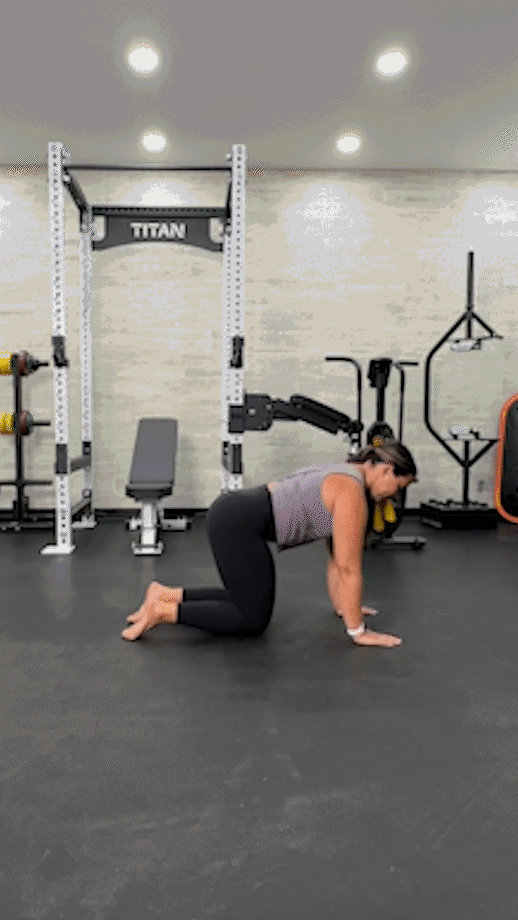
Useful Bird Dog Equipment Accessories
We, for the most part, only need a conservative section of floor space and our lovely selves to reap the benefits of the bird dog exercise, but are there any accessories we could use to make our experience cushier? We can think of one.

Yoga Mat
If you’re of a certain age, the idea of letting your poor knees push into the hard floor is probably not very appealing.
One of the best exercise mats will alleviate that condition lickety-split, providing a little cushioning to protect your joints and help you stay focused on what matters— moving in sync and squeezing those core muscles!
FAQs: Bird Dog Exercise
What muscles does the bird dog exercise work?
The bird dog exercise is a beast for building core stability, providing muscle activation in the rectus abdominis, transverse abdominis, obliques, and erector spinae, but wait! There’s more!
Ths bodyweight exercise also provides activation to adjacent muscle groups like the glutes, hamstrings, delts, and upper back muscles.
RELATED: The Best Oblique Workouts
Is the bird dog exercise good for abs?
The bird dog exercise is a great movement for targeting the abdominal muscles.
Not only will you work the rectus abdominis, which is the big muscle in the center of the abdomen commonly referred to as the “six-pack” muscle, you’ll hit the obliques as well, building great all-around core strength and stability.
RELATED: Lower Ab Workouts to Try
Do bird dogs strengthen your back?
Absolutely.
A 2019 study published in the International Journal of Environmental Research and Public Health4 found that, when it comes to core muscle exercises, that the “squat and bird-dog exercises are especially effective in activating the lumbar erector spinae,” meaning you’ll get great activation in the lower back while performing bird dog exercises.
In addition, a 2022 study published in the Journal of Orthopaedic and Sports Physical Therapy5 found that exercise regimens that included core-based exercises, namely Pilates, were very successful at reducing symptoms of chronic low back pain.
The bird dog exercise, often included during Pilates and/or core-based workouts, will therefore contribute to a stronger back, including great stability, improved trunk function, and less pain.
References
1. GBD 2017 Disease and Injury Incidence and Prevalence Collaborators. Global, regional, and national incidence, prevalence, and years lived with disability for 354 diseases and injuries for 195 countries and territories, 1990–2017: a systematic analysis for the Global Burden of Disease Study 2017. The Lancet. 8 Nov 2018: 392.
2. Hlaing SS, Puntumetakul R, Khine EE, Boucaut R. Effects of core stabilization exercise and strengthening exercise on proprioception, balance, muscle thickness and pain related outcomes in patients with subacute nonspecific low back pain: a randomized controlled trial. BMC Musculoskelet Disord. 2021;22(1):998. Published 2021 Nov 30. doi:10.1186/s12891-021-04858-6
3. Lee BC, McGill SM. Effect of long-term isometric training on core/torso stiffness. J Strength Cond Res. 2015;29(6):1515-1526. doi:10.1519/JSC.0000000000000740
4.Calatayud J, Escriche-Escuder A, Cruz-Montecinos C, et al. Tolerability and Muscle Activity of Core Muscle Exercises in Chronic Low-back Pain. Int J Environ Res Public Health. 2019;16(19):3509. Published 2019 Sep 20. doi:10.3390/ijerph16193509
5. Fernández-Rodríguez R, Álvarez-Bueno C, Cavero-Redondo I, et al. Best Exercise Options for Reducing Pain and Disability in Adults With Chronic Low Back Pain: Pilates, Strength, Core-Based, and Mind-Body. A Network Meta-analysis. J Orthop Sports Phys Ther. 2022;52(8):505-521. doi:10.2519/jospt.2022.10671


